Causes of curliness of peach leaves and measures to combat it

Peach leaf curl is a fairly common fungal disease that literally every gardener faces. Because of what this disease appears, how to identify and treat it, we will tell you in this article.

Why does it appear?
Peach leaf curl is a disease caused by a fungus. As a rule, the disease intensifies during the spring, when more or less warm weather begins. The development of the disease is especially promoted by high humidity, as well as frequent precipitation. In addition to peaches, plants such as apricots, nectarines and almonds are also affected.

The disease especially affects young foliage during the period of active growth of the tree. Adult foliage, whose age is two or more weeks, is affected much less often.
Most often, curliness appears due to insects - they are the carriers of this disease. With their help, the fungus gets into the most vulnerable places of the plant, which include small cracks, wounds or buds. Subsequently, from there, fungi begin to actively develop and ultimately destroy the tree.

Another reason is the unremoved leaves that have been affected by the fungus. Such leaves subsequently become the cause of the intensification of the disease. Fungi begin to move along the bark, they spend the winter there, and on warm spring days they begin to infect the plant.
There is another reason for the infection. This includes the dense planting of the garden - it is this factor that allows the disease to move freely from plant to plant.

Signs
Usually, the symptoms of this disease appear after the young leaves begin to bloom and open, around the beginning of the growing season. On them, bumps of a light green hue begin to form, which over time become pale yellow, and then turn red and brown. Besides, the affected leaves become brittle and brittle, losing their former elasticity, and the processes of photosynthesis are disrupted.

At the same time, depressions begin to form on the other side of the affected leaf. The affected areas themselves begin to thicken, and over time, a light plaque begins to appear on them. Subsequently, such leaves begin to die off, turn black and ultimately simply disappear.

Symptoms also appear on young shoots of plants. They get thicker and then curl. By the end of summer, diseased shoots dry out or, reaching the winter period, freeze out.
It is worth mentioning about the flowers of diseased plants. As a rule, they have larger petals and a variegated color. Such flowers usually begin to fall off without forming ovaries. The fruits of such plants, as a rule, are shiny, swelling and cracks soon begin to appear on them. Subsequently, they are crushed and fall off.
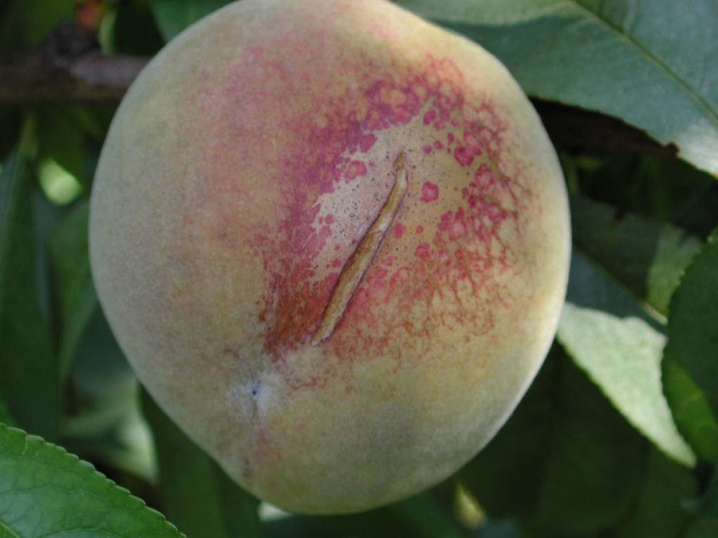
The disease also affects the number of fruit buds laid for the next season. It drops sharply. Usually, after an illness, the plant does not bear fruit at all the next year. Such trees noticeably lag behind in growth, as it slows down, and their frost resistance is significantly reduced.

Treatment methods
Chemical
Chemicals are considered the most effective remedy for curling peach leaves. However, summer residents do not particularly like to use them, which is explained by the high toxicity of this kind of funds.In addition, it is recommended to use them only before flowering.
The chemicals used in the treatment of this disease include fungicides that contain copper, as well as urea, milk of lime, copper sulfate, or three percent Bordeaux liquid. Among the fungicidal agents, "Skor", "Raek", "Folpan", "Abiga-Peak" and others stand out especially. Before using them in practice, you must carefully read the instructions for use, which are usually located on the packaging.
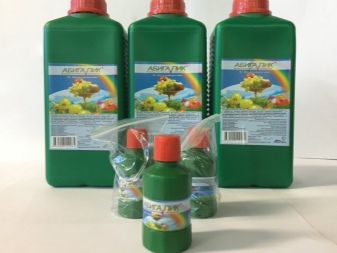


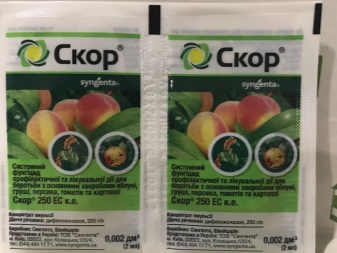
As a rule, several treatments are required to completely cure a tree from a fungus.
Please note that when treating a plant with chemicals, you must strictly follow safety precautions. RIt is also recommended to use personal protective equipment, namely a mask and gloves. This way, you can minimize the risk of self-harm.

Agrotechnical
Agrotechnical control measures are suitable only in cases where the disease has just begun to develop and has not managed to infect most of the tree. Otherwise, it is worth resorting to harsher and more radical methods of treatment.
Agronomic measures include pruning and complete destruction of diseased plant parts, including foliage and branches. In this case, all the places from which the branches were cut must be lubricated with a special solution. This also includes cleaning the trunk circle from mulch, weeds and old foliage, as well as deep loosening.


Agricultural technology also includes fertilizing a tree with a mineral complex fertilizer. Usually, such feeding is done after the plant has been treated with fungicidal preparations. This also includes the regulation of watering the plant. Usually, when this disease occurs, the amount of moisture given to the plant is sharply reduced in order to prevent waterlogging.

Further, watering is carried out only after the trunk circle is completely dry.
Note that all of the above agrotechnical methods are recommended to be applied to healthy trees, which is necessary to maintain their good condition. It is necessary to hold events of this kind at intervals of a couple of weeks. However, it is worth considering that if we are talking about working with diseased trees, then in this case, a separate disinfection of garden accessories will be required. Otherwise, the risk of transferring the infectious fungus to another, healthy tree increases.

Folk remedies
Folk remedies are somewhat inferior in effectiveness to chemical drugs, and therefore they are recommended to be used only at the initial stages of the development of the disease. These methods are in great demand among gardeners. This is due to the cheapness of folk remedies, the ease of their manufacture, as well as their non-toxicity.
Among the most effective means for combating this disease is tobacco solution. To prepare it, you need a kilogram of tobacco and 5 liters of boiling water. The solution must be stirred and left in a warm place for two days, previously covered with a lid. After this time, the solution must be diluted in a ratio of 1 to 2, after which the plants can be processed. This should be done at intervals of 14 days.
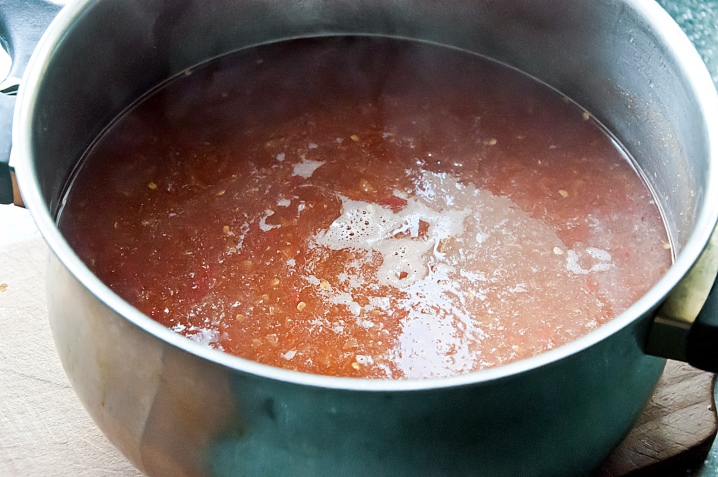
Clay emulsion is also often used to combat this disease. To prepare the product, you will need 0.35 kilograms of clay, a bucket of water and 90 grams of slaked lime. All the constituent funds must be thoroughly kneaded so that there is no sediment left. It is recommended to process with this tool in the early stages of diseases. In addition, it can be used as an adjunct to chemicals.

Prevention measures
Preventive measures help to avoid the onset of the disease or to identify and get rid of it at the earliest stages. So, it is necessary to periodically examine the tree for symptoms of disease or parasites that are carriers of the infection.
It is also necessary to provide the plants with quality care. This applies to watering, fertilizing, loosening, removing weeds, as well as fighting harmful insects. This also includes the protection of the plant from frost. Frozen plants, as a rule, lose their immunity and become unable to resist disease.

It is also recommended to periodically disinfect garden tools, since it is with its help that fungal spores can be transferred from a diseased plant to a healthy one.
Do not neglect the elimination of old foliage that has already fallen off. It is under it that harmful insects and fungus can hide. There they will safely endure wintering, and then they will activate closer to spring and begin to precipitate the plant.
Particular attention should be paid to the selection of planting material. It must be of high quality, only in this case the tree will have strong immunity and will be able to withstand attacks from insects and diseases.
In spring and autumn, the plant must be sprayed with a three percent solution of copper sulfate or Bordeaux liquid. This should be done regardless of whether your tree is sick or not.
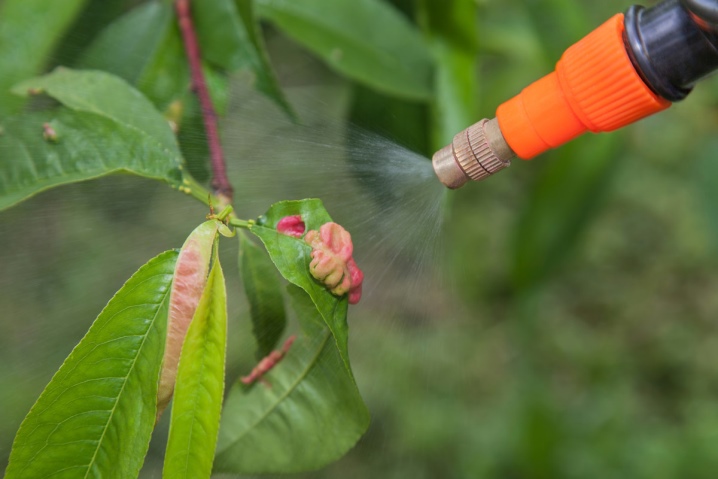











The comment was sent successfully.